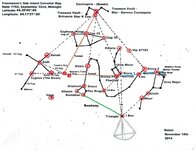gjb
Sr. Member
- Apr 21, 2016
- 281
- 333
- Detector(s) used
- Garrett Ace 300i
Garrett EuroAce
- Primary Interest:
- All Treasure Hunting
- Thread starter
- #21
Hi; During one episode they stated that they had spent"Millions" on it. Maybe that was BS as well. Anyyways, I'll way until the real dirt hits the fan so to speak. It WAS interesting at first but not now. PEACE:RONB
Now I understand. That's true, millions have been spent previously on 10X - it goes back near 50 years - but I'd be surprised if the Laginas have spent that much in relative terms (though the price they paid may have included the 10X investment), and I just can't see them committing to the expenditure necessary to complete the dream based on the results to date.
I wouldn't let Dan Blankenship's (or Triton's) obsession, and the reluctance of the Laginas to complete his work, cause you to give up on the quest. The series is annoying in its repetition and it's pandering to modern public tastes, but it's not all bad!
Last edited:





